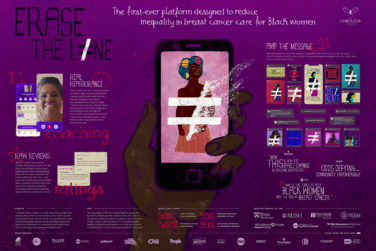Is the metaverse a worthwhile investment for pharma? Is the metaverse even a worthwhile investment for Meta? In July, Meta’s second-quarter earnings report revealed its Reality Labs unit, which is responsible for developing its virtual reality (VR) and augmented reality (AR) technologies, lost $3.7 billion—and $21.3 billion in total over the last year. While that led many to speculate Meta CEO Mark Zuckerberg would choose to move on from the metaverse, he has stated that is not the case.
At Meta Connect 2023, held on September 27, the company announced its new Meta Quest 3 headset along with an AI chatbot with 25 different personalities that will debut on WhatsApp, Messenger, and Instagram, but will eventually make its way to the metaverse in the form of an avatar users can talk to, according to Zuckerberg. And Meta isn’t the only company still trying to boost use of virtual, augmented, and mixed technologies in the hope of creating more virtual worlds where people can play, connect, work, shop, and more. Apple announced a new “spatial computing” device, the Vision Pro. Steam recently released the beta of its upgraded virtual platform, SteamVR 2.0. Microsoft’s Mesh platform opened for demos in October to reimagine how employees can work virtually. That’s just to name a few of the most recent announcements.
In a 2022 survey by the Pew Research Center of 624 technology innovators, developers, business and policy leaders, researchers, and activists, 54% said they expect by 2040 the metaverse will be a “much-more-refined and truly fully-immersive, well-functioning aspect of daily life for a half billion or more people globally.” So, should pharma be preparing for a future where this is the case? Is there anything they should do within the metaverse now? Or should they forget about it? PM360 asked 10 experts:
- What are the current opportunities for the life sciences industry within the metaverse?
- What are the best future opportunities? How long will it be before those opportunities are possible? Do you believe the metaverse will eventually realize that potential or will it eventually fade out?
- What current metaverse-related technology most excites you and why? What advancements in software or hardware still need to be made for the metaverse to eventually be widely adopted?
- What is your best advice for companies considering whether to enter this space?
The opinions expressed by the authors in the Think Tank section are their own and do not necessarily reflect those of their affiliated companies or organizations.
 Brands across industries find the metaverse alluring. But, as many ventured into this virtual realm, customer engagement often waned. The term “metaverse” transitioned from a groundbreaking technology to a potentially nebulous concept. We are at a nascent stage with the hardware, software, and availability of this novel technology. However, this is the right time for life sciences marketers to recalibrate their approach.
Brands across industries find the metaverse alluring. But, as many ventured into this virtual realm, customer engagement often waned. The term “metaverse” transitioned from a groundbreaking technology to a potentially nebulous concept. We are at a nascent stage with the hardware, software, and availability of this novel technology. However, this is the right time for life sciences marketers to recalibrate their approach.
The metaverse, when integrated with recent advancements such as generative AI, can help life sciences marketers engage with healthcare professionals, patients, and caregivers in a richer, better way, leading to a more human-centric experience.
Apple famously used the term “spatial computing” instead of “metaverse” when introducing the Vision Pro. This shift underscores the evolution in perception and strategic approach, going beyond mere semantics. It emphasizes data-driven, sophisticated platforms over abstract virtual spaces and games. Life sciences marketers must:
- Embrace “Spatial Computing”: In a highly-regulated, data-sensitive industry, spatial computing experiences (VR, AR, MR) help craft human sensory experience.
- Initiate Small-scale Pilots: By using spatial computing for compact events such as virtual seminars or interactive exhibits, life sciences firms can communicate scientific information faster in new, interactive ways.
- Collaborate with Domain-Specific Consultancies: A strategy and content approach that is agnostic to the technology but highly relevant to the domain and brand is the ideal way to get traction.
In summary, the promise of spatial computing, combined with technological advancements, is too significant for life sciences marketers to overlook. By emphasizing a data-centric, domain-specific approach that remains technology agnostic, marketers can harness the potential of this emerging technology paradigm. Small-scale pilots and strategic partnerships can further refine and elevate their foray into this exciting realm, enabling them to be future ready.
 As the number of uses for the metaverse increases and the cost and access to its component technologies improve, use of this virtual environment is expanding throughout the healthcare industry.
As the number of uses for the metaverse increases and the cost and access to its component technologies improve, use of this virtual environment is expanding throughout the healthcare industry.
For Patients: The metaverse could usher in an era of personalized health management. The U.S. has more than 6,000 hospitals, with one-third located in underserved, rural areas. With less access to preventive care, those hospitals are over-burdened with challenging cases. Their wait times are long. Their staffing can be tenuous with the expected case load. Giving HCPs and patients a virtual environment to connect could help solve this challenge on multiple levels, including preventative care, and improve outcomes for patients living in rural areas.
For Specialized Care: We’ve heard heroic stories of patients living in “Health Deserts” driving almost a whole day to receive specialized oncology care because they had no options in their local communities. This creates a spiderweb of negative effects. Patients may lack access to a specialized oncologist and the oncologist they do work with may determine treatment based on that patient’s distance to an infusion center and the burden the treatment may bring to the patient and their family. The metaverse unlocks access to specialized care that patients living in rural health deserts have not had access to before.
For Doctors: The metaverse presents novel opportunities for collaboration and skill enhancement. Virtual reality simulations could provide a safe environment for HCPs to practice complex procedures, refining their skills without the risk of patient harm. Similarly, medical conferences and training programs could transition to virtual spaces, enabling doctors to attend global events from the comfort of their offices.
 At Accenture, we define the metaverse not as a place or one technology but rather an evolving and expanding continuum of technologies that help to inspire and support new realities. These technologies not only include AR/VR/MR but also distributed ledger technology, digital twins, tokenization, AI, and smart devices to name a few. We are seeing companies embark on end-to-end metaverse strategy development to identify the right fit in their business, the right use case, and the right technology to bring the most value.
At Accenture, we define the metaverse not as a place or one technology but rather an evolving and expanding continuum of technologies that help to inspire and support new realities. These technologies not only include AR/VR/MR but also distributed ledger technology, digital twins, tokenization, AI, and smart devices to name a few. We are seeing companies embark on end-to-end metaverse strategy development to identify the right fit in their business, the right use case, and the right technology to bring the most value.
For instance, Blockchain and non-fungible tokens (NFTs) can help solve traditional supply chain and manufacturing problems and create new marketing opportunities. Monetizing health data through NFTs can incentivize patients to share their information. Sales training is another area ripe for innovation. Companies can identify the best moments where immersive learning can accompany existing training programs to increase learning retention in a shorter period of time, reduce costs, and increase engagement scores with HCPs. For example, training programs can help with decision-making processes or aid in increasing empathy in call center situations (i.e., how to handle emotional circumstances).
The metaverse could also change the reality of clinical trial participation. Wearables, implantables, and other sensors could make large-scale decentralized trials a reality, with real-time trial data seamlessly accessible to the right people in the right format, across the globe. For instance, Acoer, a leading developer of real-time blockchain-enabled software, launched a decentralized software engine called RightsHash, which allows individual consent for participation in a clinical trial that can be managed and tracked using NFTs.
Leaders need to step back and reimagine the worlds in which they operate, the roles they want to play and the roles that patients will want to define and own—patient centricity will rise to new heights.
 The “metaverse,” a collective virtual shared space, has ignited imaginations—and debates—worldwide. Is it our future business world? Or is it an over-hyped digital fantasy land? The metaverse promises to bring shared virtual experiences to life, but what can it deliver for pharma?
The “metaverse,” a collective virtual shared space, has ignited imaginations—and debates—worldwide. Is it our future business world? Or is it an over-hyped digital fantasy land? The metaverse promises to bring shared virtual experiences to life, but what can it deliver for pharma?
Last year, our Metaverse Task Force set out to uncover opportunities in these new spaces. We dove in with excitement, but what we initially found was…underwhelming. We found a sea of meta-platforms vying for virtual guests, offering interactions between somewhat-awkward avatars. For healthcare-minded participants, the public metaverse worlds weren’t yet built for science, and thus the question remained: how can life sciences harness virtual spaces without costly, customized solutions?
Technology that Could Turn the Metaverse Around
Fortunately, as in the early days of the Web, these first valiant attempts are quickly being replaced by streamlined experiences and robust, AI-powered tools. Apple’s Vision Pro headset stands to invigorate spatial computing when released. Though niche at first, it’s expected to usher in widespread interest in shared virtual experiences. NVIDIA is having its own “iPhone moment”—their incredible advancements in AI and generative 3D are going to be game-changing. The bridge between the meta-world and the real world is about to explode with potential. Exciting opportunities are ahead as we begin to augment physical spaces with educational digital content.
Spaces in the metaverse may be new and unusual at first, but we should embrace the opportunity to reach audiences wherever they may be. Consumers and HCPs are now used to virtual experiences and expect them. The next generation of virtual medical education and networking is right around the corner.
 The metaverse and gaming are forms of digital therapeutics, plain and simple. Seeing the effect on people for mental health and physical health reinforces the fact that the metaverse, specifically used in gaming, is so far removed from passive entertainment. It is an active form of expression, connection, and therapy. We believe the metaverse and gaming are the future—and there is a hunger for it now.
The metaverse and gaming are forms of digital therapeutics, plain and simple. Seeing the effect on people for mental health and physical health reinforces the fact that the metaverse, specifically used in gaming, is so far removed from passive entertainment. It is an active form of expression, connection, and therapy. We believe the metaverse and gaming are the future—and there is a hunger for it now.
After reviewing Real Chemistry’s clients and their patients, we found our client audiences were over indexing in gaming by 200% more than the general population. The metaverse gives opportunities for truly immersive experiences to quite literally step into the shoes of someone with a condition and experience the way it affects decision making, relationships, and other aspects of their health. There is immense potential to meet people where they are in channels they prefer and to make incredible leaps in improving patient outcomes.
Healthcare Opportunities in the Metaverse
Think about the barriers that melt away when someone can complete a diagnostic visit with an HCP utilizing the metaverse and biometric technology for a virtual visit. Imagine group therapy sessions taking place where patients are able to feel more at home, more comfortable, and more vulnerable with their patient peers and physicians to receive the care they need. The options really are limitless.
We believe the metaverse is going to become an increasingly viable opportunity to deliver better patient experiences and to improve patient and HCP interactions. Companies should be exploring the best ways to fuse healthcare and gaming within the metaverse to keep brands, treatment journeys, and the patient experience as accessible, effective, and engaging as possible.
 In the ever-evolving landscape of technology, the metaverse emerges as a captivating opportunity to revolutionize marketing strategies and engage with others in previously unimaginable ways. By creating immersive and interactive experiences, we can transcend traditional marketing methods and establish deeper connections with consumers. By crafting interactive showcases and engaging experiences, we can market seamlessly into users’ lives.
In the ever-evolving landscape of technology, the metaverse emerges as a captivating opportunity to revolutionize marketing strategies and engage with others in previously unimaginable ways. By creating immersive and interactive experiences, we can transcend traditional marketing methods and establish deeper connections with consumers. By crafting interactive showcases and engaging experiences, we can market seamlessly into users’ lives.
One of the standout features is the ability to personalize interactions. AI can gather real-time data about users’ preferences, behaviors, and interaction within virtual spaces. This information empowers us to tailor our messaging and products to individual consumers, enhancing the overall user experience, while leading to higher engagement, increased brand loyalty, and more effective campaigns. By using AI-captured data, we can transcend conventional advertising formats and immerse the user in captivating experiences that resonate on emotional levels, creating interactive narratives which allow the user to explore and influence the storyline so they can foster deeper connections and sustained experiences.
Where Companies Must Be Careful
While the metaverse offers exciting prospects, privacy and data security become paramount as the collection of user data for personalization requires transparent and ethical practices. Balancing immersive experiences with non-intrusive marketing messages is crucial to avoid overwhelming users while maintaining engagement. It’s also imperative for companies to establish a legal and regulatory framework that responsibly controls the use of these technologies and addresses the potential risks and harms.
The metaverse is a groundbreaking concept to be explored. The immersive and interactive nature of digital spaces provides an innovative platform for personalized engagement and creative storytelling. As the metaverse continues to develop, forward-thinking organizations who embrace its potential stand to redefine the way brands and consumers interact in the digital age.
 Offering a unique and emerging vantage at the intersection of technology, healthcare, virtual environments, and spatial data, the metaverse holds immense potential for the life sciences industry. Foremost to these initiatives are:
Offering a unique and emerging vantage at the intersection of technology, healthcare, virtual environments, and spatial data, the metaverse holds immense potential for the life sciences industry. Foremost to these initiatives are:
- Virtual Clinical Trials: Patients can participate in trials from the comfort of their homes to interact with doctors, via browser or headset. This not only enhances convenience but also increases participant diversity and reduces costs.
- Medical Training and Education: Medical students and professionals can use immersive simulations to practice surgeries, diagnose patients, and learn about rare diseases in a realistic and risk-free environment.
- Drug Discovery and Modeling:Life sciences companies can utilize the metaverse to visualize complex molecular structures and simulate drug interactions. This can significantly accelerate drug discovery and reduce research and development costs and timelines.
- Telemedicine and Remote Consultations:Virtual clinics within the metaverse can provide a secure and immersive platform for healthcare consultations. Patients can access HCPs from around the world, improving access to healthcare services.
- Health Data Management:Secure metaverse-based platforms can offer a more efficient and secure way to manage health data, allowing patients to have control over their records while ensuring privacy and security.
The timeline for realizing these opportunities varies. Some are already in the experimental phase—such as virtual clinical trials and medical simulations—others could become more mainstream within the next three to five years. Others, such as metaverse-based telemedicine and drug discovery, are going to require more organic consumer/patient adoption. However, in all cases, the pace of development will depend on factors like technology advancements, regulatory approvals, societal acceptance, and the political landscape. The best thing life sciences companies can do NOW is devise a strategy and begin introducing web-based or other extended reality (XR) integrations into marketing, promotions, and outreach.
 As quickly as the metaverse appeared on our radar it was soon overshadowed by the significant advancements and hype from generative AI and its potential impact on many aspects of the healthcare industry. The adoption of generative AI solutions has a much broader and immediate appeal to digital transformation agendas, and many of our clients are exploring these technologies today and the need to implement the metaverse has slipped in demand.
As quickly as the metaverse appeared on our radar it was soon overshadowed by the significant advancements and hype from generative AI and its potential impact on many aspects of the healthcare industry. The adoption of generative AI solutions has a much broader and immediate appeal to digital transformation agendas, and many of our clients are exploring these technologies today and the need to implement the metaverse has slipped in demand.
Don’t Let AI Completely Overshadow the Metaverse
That being said, the metaverse could still add value in focused areas within an organization’s long-term digital strategy, specifically within medical training, telemedicine, training simulations, and remote collaborations, but these projects need to be prioritized within the overall digital strategy. We are finding that these investments are frequently de-prioritized for higher value and more immediate ROI initiatives.
For clients with a strong desire to enter the metaverse, we recommend they proceed with clearly defined objectives, start small, preferably with a proof-of-concept approach, and measure frequently including end-user testing. It’s also important to be aware of any regulatory guidelines and understand the content delivery process of their metaverse content. We don’t think the metaverse is officially over, but its appeal, specifically in healthcare, is being overshadowed by AI technologies with broader applications.
 In spite of the hype, many organizations have struggled to define the metaverse and see it contribute to meaningful change in the life sciences industry. Our research at Cognizant pinpointed virtual collaboration, training, and digital twins as some of the most promising opportunities. Life sciences organizations could also leverage metaverse solutions to develop immersive experiences to better explain and understand mechanisms of action or scenarios in scientific literature.
In spite of the hype, many organizations have struggled to define the metaverse and see it contribute to meaningful change in the life sciences industry. Our research at Cognizant pinpointed virtual collaboration, training, and digital twins as some of the most promising opportunities. Life sciences organizations could also leverage metaverse solutions to develop immersive experiences to better explain and understand mechanisms of action or scenarios in scientific literature.
For example, AR/VR could be used to help a cardiologist experience what’s happening inside a heart during certain disease states when a particular drug is ingested or treatment administered. This could be used to educate HCPs during industry events or through continuing education sessions. Additionally, metaverse solutions could be used to train technicians to service and repair highly complex equipment, such as laboratory systems, surgical equipment, etc.
How to Design Your Metaverse Strategy
Organizations should be open to experimenting with metaverse solutions, but they should experiment with a purpose. Leaders should design beyond a focused, point-solution use case and instead think in terms of pivotability and changeability during the design process. You also have to bridge the gap between what metaverse is seen as now and what it promises to be.
If you build for the current state, you might end up with a suite of VR applications that do not take advantage of the open-ended, collaborative nature of the metaverse. Build with a goal too far in the future, and it might be difficult to land those early wins that will help justify a business case for continued investment. But the most important thing is to start—we can’t miss any opportunities to help transform the life sciences industry, improve the patient experience, and bring drugs and therapies to market faster.
 Life sciences companies should closely monitor new developments and innovations adopted by gaming companies, retail, apparel, and fashion brands, and take inspiration from these industries’ foray into the metaverse. Roblox and Fortnite, for example, have created virtual worlds for brands to integrate into and engage consumers with digitally exclusive experiences, even partnering with the likes of Nike and Gucci. These industries present a variety of applications for life sciences leaders to emulate and explore within the healthcare and pharma arena. Creating virtual labs for R&D, mixed reality, and immersive health education are metaverse applications that come to mind for exploration and investment.
Life sciences companies should closely monitor new developments and innovations adopted by gaming companies, retail, apparel, and fashion brands, and take inspiration from these industries’ foray into the metaverse. Roblox and Fortnite, for example, have created virtual worlds for brands to integrate into and engage consumers with digitally exclusive experiences, even partnering with the likes of Nike and Gucci. These industries present a variety of applications for life sciences leaders to emulate and explore within the healthcare and pharma arena. Creating virtual labs for R&D, mixed reality, and immersive health education are metaverse applications that come to mind for exploration and investment.
Blending digital and physical worlds, innovations such as the Meta Quest 2 and Apple’s Vision Pro will be game-changing for the healthcare industry once they become more widely accessible. Creating a bridge into the metaverse for the masses, augmented reality promises to be the next logical step, before full virtual immersion.
The Future of Health in the Metaverse
While privacy, trust, regulation, consumer participation, and constantly evolving technology pose immediate challenges, the “right now” investment into developing products and strategies to overcome these challenges will pay off when the metaverse becomes mainstream in the near future. Life sciences companies who create virtual solutions for consumers’ daily healthcare challenges will transform how we manage our health.
One day, patients living with cancer or type 2 diabetes will be able to explore new treatments, interact with healthcare professionals, join virtual support groups, immerse themselves within condition education, and even purchase Rx and OTC products all from the virtual comfort of home. We’ll understand then that investments in virtual and augmented reality from forward-thinking organizations made healthcare more accessible than ever and recognize these life sciences players as the victors.








